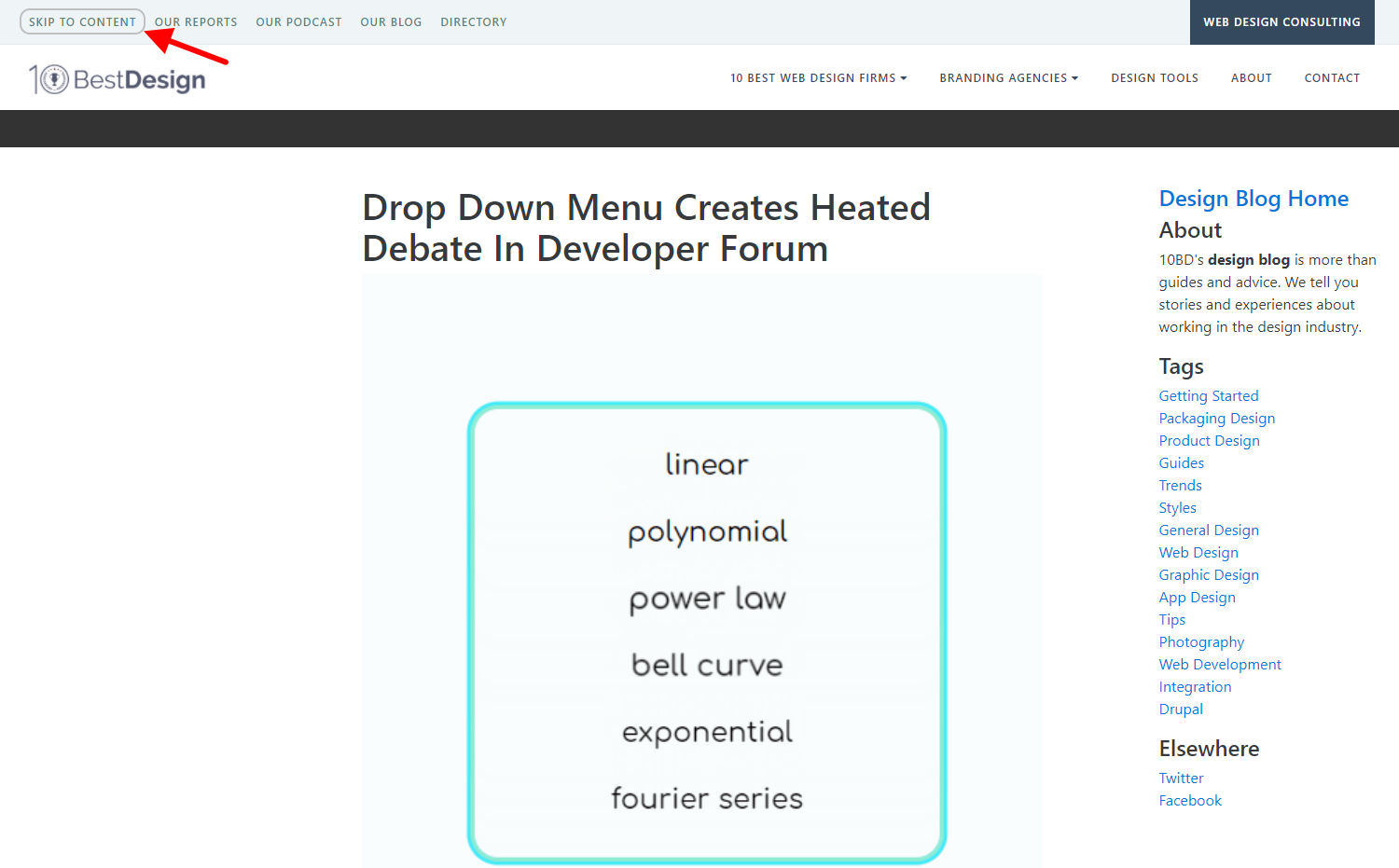Skip-Links: Pros & Cons of Accessibility Feature for the Visually Impaired

The contest perpetually waged between websites over SEO and SERP placement has resulted in various convenience features once considered optional now being all but required for a website to have a reasonable shot at staying on top. On top of making extensive use of optimized file formats and accurately labeled and descriptive tags, a given website is now incentivized by the rules of ranking in SERPs to incorporate user accessibility into its overall structure.
The aforementioned tags play a role in one of the most common methods of ensuring that all potential members of a website's audience can actually engage with the site: letting visually impaired readers digest the content without needing another person vocally reciting it. Programs called screen readers parse text-based content and have synthesized voices recite each word in sequence. However, it is not possible for a screen reader to interpret an image file the way the human eye can, so it is up to the author of the page to attach a descriptive tag to the image that the screen reader can recite in the file's place.
A screen reader's ability to recite descriptive tags behind the scenes is reflective of its default procedure of reading through the source code of the web page instead of the text-based content displayed up front. The program will therefore recite any text enclosed within any tag regardless of context, which often means screen readers will recite every named link within a navigation bar near the top of the page before reaching the main content.
To an extent, this procedure is very useful for blind readers because it defines for them the links they can get to from their current page once they are done with the content. On the other hand, if the readers are consuming many similar pages of content, they would likely have to hear the program recite the exact same navigation bar every time they go to a new page. To accommodate blind users on this matter, web authors put "skip-links" before segments such as navigation bars so that the users can reach the content faster. For more information click here https://www.voorhoede.nl/en/blog/why-skip-links-are-important-for-accessibility/.
